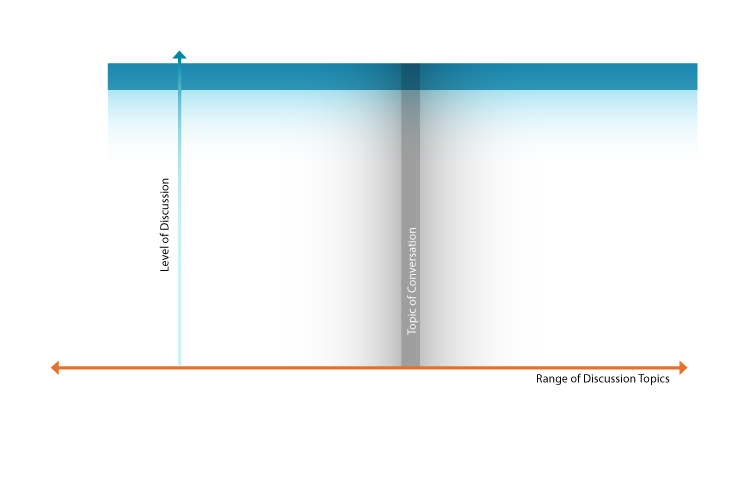Hans Rosling is a professor of International Health at Karolinska Institute in Stockholm, Sweden. (He has been featured on this blog before—“No More Boring Data”.) For me, the most important point Dr. Roseling makes in this TED presentation is that time-saving technology raises the general level of education in the community and women in particular.
Users
Background Knowledge Errors, Errors, Ethnographic & User Data, Pipsqueak Articles, Product Design Strategy, Users
Knowledge, Context, and Expectation Part II
by Olga Werby •

I first came across this image years ago in our pediatrician’s office. It made everyone who saw it laugh. The young boy—less than a year old, probably—has very limited world experience. But somethings he knows well—food comes out of those! The boy recognized the imagery, but with his limited background knowledge of art and contextual experience, his expectations of milk were quickly dashed (to the complete amusement of his mother). While we enjoy the boy’s predicament, it is good to keep in mind that the products we create can put our users at a disadvantage. The product’s audience can similarly have limited background knowledge, misinterpret the context, and be left with unexpected consequences. And a loving mother might not be there to console them…
Background Knowledge, Conceptual Design, Flow, Interaction Design, Interface Design, Pipsqueak Articles, Product Design Strategy, Scaffolding, Users, ZPD
Remarkable Design
by Olga Werby •

How does one design a remarkable product? “Well, it depends on a product,” some would say. But couldn’t we say something general? Why do we feel passionate about some products but not others? Consider conversations: some are fun, some are boring; some engage lots of people, some not so much; some result is heated exchanges, some are more neutral. Note that you can be very passionate about a topic, but don’t consider it fun: rape, genocide. Politics engages lots of people, but the details leave most bored. Some conversations generate sustained interest, and some fizzle out without a remark. What’s required for a conversation to be remarkable? That depends on the audience. To be engaged in a discussion, you have to find the topic interesting to you. And what’s interesting to you, might not be to me. Thus the topic of conversation is a variable of the targeted audience. Even if you find the topic amusing, you might not have the time to participate in the conversation. “I would love to talk to you about quantum space time, but the plane leaves in 5 minutes.” And it is so noisy on the plane that you can only hear every other…
Pipsqueak Articles, Users
Bullying in a Workplace
by Olga Werby •
On Valentine’s Day, February 14 2011, New York Times ran an article “Web of Popularity, Achieved by Bullying” by Tara Parker-Pope—recent research shows interesting patterns in bullying and victimhood distribution in the school student body. As I was reading the article, I realized that much of what is being described there had a direct parallel in a workplace. I don’t have the data to back this up, but I had personal experiences giving me some anecdotal evidence. Perhaps you have had similar experiences as well (academia is ripe with them). To make my point I’ll quote part of the article below and use bold on text that I’ve replaced in the article: students to co-workers; student body to employees, and so on. Enjoy! Web of Popularity, Achieved by Bullying By TARA PARKER-POPE For many employees navigating the social challenges of a workplace, the ultimate goal is to become part of the “popular” crowd. But new research suggests that the road to workplace popularity can be treacherous, and that employees near the top of the social hierarchy are often both perpetrators and victims of aggressive behavior involving their peers. The latest findings, being published this month in The American Sociological Review,…
Attention, Attention Controls Errors, Cognitive Blindness, Conceptual Design, Cultural Bias, Featured, Flow, Interaction Design, Interface Design, Mental Model Traps, Perceptual Focus Errors, Pipsqueak Articles, Product Design Strategy, Users, Working Memory
Multitasking Myth
by Olga Werby •

I’ve been noticing a lot of praise and demand for mutlitaskers: “We are looking for a talented individual who is [insert a laundry list of qualifications here] and is also a great multitasker!” or “Women are naturally better at multitasking.” or “Not only is he gifted, but he is able to work on all these projects simultaneously. If only we had a dozen more just like him!” (—probably just to get anything done!) The interesting aspect of this increased demand for multitasking is the rise of ADHD diagnosis. So I thought it would be an interesting exercise to pin down what exactly is being praised and diagnosed. A Curious Case of ADHD Let’s start with formal diagnostic criteria for ADHD (attention deficit hyperactivity disorder). What are the symptoms of ADHD? Below is a list of attributes that is adapted from the Diagnostic and Statistical Manual of Mental Disorders 4th ed. (DSM-IV). When you read this list the first time, imagine an eight year old boy trapped in an elementary classroom. On the second reading, consider an 80-year-old woman in a nursing home. On the third, visualize a soldier just back from Afghanistan. And finally, when you read the list for…
Cognitive Blindness, Mental Model Traps, Pipsqueak Articles, Product Design Strategy, Users
How Users Really Feel…
by Olga Werby •
Sometimes during the design process, there’s a real tension between the audience needs and the client desires. As product designers, it’s our job to resolve this tension in favor of the user (as long as the client’s business needs are still being met by the design). But sometimes, we lose: Enjoy!

